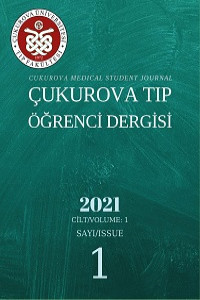Abstract
Binlerce yıldır dünya genelinde tüm toplumların başvurduğu bitkisel tedavi yöntemleri günümüzde hala kullanılmaya devam etmektedir. Bu köklü anlayıştan doğan, bitkisel ürünlerin tamamen doğal ve şifalı olduğu algısı, bu ürünlerin güvenilir olarak nitelendirilmesine ve hekim kontrolü dışında kullanılmasına yol açmaktadır. Bitkisel ürünlerin başlıca kilo verme amacıyla kullanılması, popülaritesini ciddi oranda artırsa da yaşamı tehdit eden potansiyel yan etkileri milyonlarca insan tarafından göz ardı ediliyor. Türkiye’de de erişimi giderek kolaylaşan bu ürünler, lipolizi stimüle ve lipogenezi inhibe etmesi nedeniyle bir yağ yakma aracı olarak tercih ediliyor. Formüllerinin "bitkisel" olmasıyla piyasada kendine kolayca yer bulabilen bu ürünlerin içerikleri sanıldığı kadar masum değil. İçerdikleri; Malabar demirhindi (Garcinia Gambocia), Yeşil çay (Camellia Sinensis), Dalak otu (Teucrium Chamaedrys), Ma huang (Ephedra Sinica) gibi bitkiler, akut karaciğer hasarı ve hepatotoksisite başta olmak üzere birçok yan etkiye neden olabiliyor. Bu derleme makale, bitkisel ürün ve diyet takviyeleriyle ilişkin olarak ortaya çıkan hepatotoksisitenin altında yatan mekanizmayı ele alıyor.
References
- 1. Gümüşel B. Geleneksel ve tamamlayıcı tıp uygulamalarının toksikolojik açıdan değerlendirilmesi. Geleneksel Ve Tamamlayıcı Tıp Ürünlerinin Ruhsatlandırılması Sempozyumu (9 Aralık 2016) Raporu, Türkiye Bilimler Akademisi (TÜBA), Ankara, 2017;43.
- 2. Kumar V, Abbas AK, Aster JC. Robbins Temel Patoloji (10. Baskı) (Çeviri Eds. S Tuzlalı, M Güllüoğlu). Ostim/Ankara, Güneş Tıp Kitabevi, 2020;301-302, 651-652.
- 3. Frenzel C, Teschke R. Herbal hepatotoxicity: clinical characteristics and listing compilation. International Journal of Molecular Sciences. 2016; 17, 588. (doi:10.3390/ijms17050588.
- 4. Ingawale DK, Mandlik SK, Naik SR. Models of hepatotoxicity and the underlying cellular, biochemical and immunological mechanism(s): A critical discussion. Environmental Toxicology and Pharmacology. 2013;37:118–133. (http://dx.doi.org/10.1016/j.etap.2013.08.015).
Abstract
Herbal treatment methods, which have been applied by all societies around the world for thousands of years, are still being used today. Arising from this deep-rooted understanding, the perception that herbal products are completely natural and healing, causes these products to be described as safe and to be used outside of medical doctor control. Although the use of herbal products, primarily for weight loss, has increased its popularity dramatically, its potential life-threatening side effects are overlooked by millions of people. These products, which are also increasingly accessible in Turkey, are preferred as a fat burning tool because they stimulate lipolysis and inhibit lipogenesis. The ingredients of these products, which can easily find a place in the market due to their "herbal" formula, are not as innocent as they seem. They contain plants such as Malabar tamarind (Garcinia Gambocia), Green tea (Camellia Sinensis), Wall germander (Teucrium Chamaedrys), Ma huang (Ephedra Sinica) which can cause many side effects, especially acute liver damage and hepatotoxicity. This review article considers the underlying mechanism of hepatotoxicity associated with herbal products and dietary supplements.
References
- 1. Gümüşel B. Geleneksel ve tamamlayıcı tıp uygulamalarının toksikolojik açıdan değerlendirilmesi. Geleneksel Ve Tamamlayıcı Tıp Ürünlerinin Ruhsatlandırılması Sempozyumu (9 Aralık 2016) Raporu, Türkiye Bilimler Akademisi (TÜBA), Ankara, 2017;43.
- 2. Kumar V, Abbas AK, Aster JC. Robbins Temel Patoloji (10. Baskı) (Çeviri Eds. S Tuzlalı, M Güllüoğlu). Ostim/Ankara, Güneş Tıp Kitabevi, 2020;301-302, 651-652.
- 3. Frenzel C, Teschke R. Herbal hepatotoxicity: clinical characteristics and listing compilation. International Journal of Molecular Sciences. 2016; 17, 588. (doi:10.3390/ijms17050588.
- 4. Ingawale DK, Mandlik SK, Naik SR. Models of hepatotoxicity and the underlying cellular, biochemical and immunological mechanism(s): A critical discussion. Environmental Toxicology and Pharmacology. 2013;37:118–133. (http://dx.doi.org/10.1016/j.etap.2013.08.015).
Details
| Primary Language | Turkish |
|---|---|
| Subjects | Clinical Sciences |
| Journal Section | Review |
| Authors | |
| Publication Date | June 30, 2021 |
| Published in Issue | Year 2021 Volume: 1 Issue: 1 |


